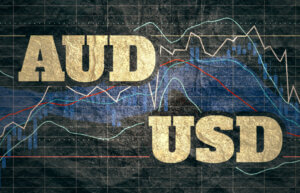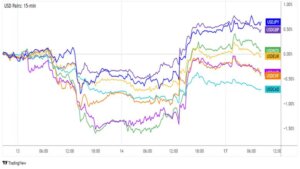
Introduction
The AUD/USD currency pair is one of the most popular and widely traded pairs in the forex market. Its importance stems from the strong trade relationship between Australia and the United States, as well as the significant role both countries play in the global economy. This article provides an in-depth look at the factors that influence the AUD/USD exchange rate, including recent trends and developments, and offers insights into various trading strategies and risk management techniques. By staying informed about the latest AUD/USD Forex News, traders can make more informed decisions and potentially improve their overall performance in the forex market.
The Australian Economy
The Australian economy is heavily reliant on its key industries, such as mining, agriculture, and services. These industries play a significant role in determining the value of the Australian dollar (AUD), as they contribute to the country’s exports and overall economic performance. Furthermore, Australia’s economic ties with major trading partners, such as China, the US, and Japan, can have a substantial impact on the AUD/USD exchange rate. Fiscal and monetary policies set by the Reserve Bank of Australia (RBA) also influence the value of the AUD, as they affect interest rates and the overall direction of the Australian economy.
The US Economy
The United States is the world’s largest economy and has a significant influence on global financial markets, including the forex market. The performance of key industries in the US, such as technology, finance, and manufacturing, has a direct impact on the value of the US dollar (USD). Additionally, the US economy’s performance and its trade relations with other major economies can affect the AUD/USD exchange rate. Fiscal and monetary policies set by the Federal Reserve (Fed) also play a crucial role in determining the value of the USD, as they influence interest rates and overall economic conditions.
Fundamental Analysis
Understanding the fundamental factors that influence the AUD/USD exchange rate is essential for traders who want to capitalize on market opportunities. The following are some key economic indicators, commodity prices, and geopolitical events that can affect the AUD/USD Forex News:
- Interest rate differentials between Australia and the US: Interest rates set by the RBA and the Fed have a direct impact on the AUD/USD exchange rate. If the RBA raises interest rates while the Fed keeps rates unchanged, the AUD will likely appreciate against the USD, and vice versa.
- Employment data and wage growth in both countries: Employment data and wage growth are important indicators of economic health. Strong employment data and rising wages can strengthen a country’s currency, while weak data can have the opposite effect.
- GDP growth rates and economic performance: The performance of both the Australian and US economies can influence the AUD/USD exchange rate. Strong economic growth in either country can boost its respective currency, while a slowdown can lead to depreciation.
- Australia’s commodity exports and their impact on the AUD: Australia is a major exporter of commodities such as iron ore, coal, and gold. A rise in commodity prices can positively impact the AUD, while a decline in prices can have the opposite effect.
- Trade relations between Australia, the US, and other major economies: Geopolitical events and policy changes in both countries can affect the AUD/USD exchange rate. For example, trade disputes or tensions between Australia and its major trading partners can have a negative impact on the AUD.
Technical Analysis
Technical analysis is a valuable tool for traders looking to identify potential trading opportunities in the AUD/USD market. Some key technical levels, chart patterns, and indicators that can help traders make informed decisions include:
- Support and resistance levels: Support and resistance levels are critical price points at which the market has historically shown a tendency to reverse or consolidate. Identifying these levels can help traders determine entry and exit points for their trades.
- Pivot points: Pivot points are calculated using previous price data to identify potential support and resistance levels. They can be useful in predicting price movements and determining appropriate stop-loss and take-profit levels.
- Fibonacci retracements and extensions: Fibonacci retracement and extension levels are derived from the Fibonacci sequence and can help traders identify potential reversal points in the market.
- Trendlines and channels: Trendlines and channels can help traders identify the direction of the market and potential areas of support or resistance.
- Head and shoulders, double tops/bottoms, and triangles: These chart patterns can provide insights into potential trend reversals or continuations, depending on the pattern and the overall market context.
- Candlestick patterns: Candlestick patterns, such as engulfing patterns, hammers, and shooting stars, can offer valuable insights into market sentiment and potential price reversals.
- Moving averages: Moving averages, such as simple, exponential, and weighted moving averages, can help traders identify trends and potential support or resistance levels.
- Relative strength index (RSI): The RSI is a momentum oscillator that measures the speed and change of price movements. It can help traders identify overbought or oversold conditions in the market.
- Stochastic oscillator: The stochastic oscillator compares a security’s closing price to its price range over a specific period. This can help traders identify potential trend reversals and overbought or oversold conditions.

Market Sentiment Analysis
Market sentiment analysis involves assessing the overall mood of market participants and can provide valuable insights into the direction of the AUD/USD exchange rate. Key factors that can influence market sentiment include:
- Trader positioning and its impact on AUD/USD: The Commitment of Traders (COT) report and retail trader sentiment data can help traders understand how other market participants are positioned, which can influence the direction of the AUD/USD exchange rate.
- Market expectations and AUD/USD forecasts: Analyst predictions and price targets can help traders gauge market expectations and potential future price movements for the AUD/USD currency pair.
- Impact of news events and economic data releases on AUD/USD: Keeping track of AUD/USD Forex News can help traders stay informed about significant news events and economic data releases that may affect the AUD/USD exchange rate.
Trading Strategies and Risk Management
Developing effective trading strategies and implementing proper risk management techniques is crucial for success in the AUD/USD forex market. Some popular AUD/USD trading strategies include:
- Technical analysis-based trading: This strategy involves using technical indicators and chart patterns to identify potential trading opportunities.
- Fundamental analysis-based trading: This strategy involves analyzing economic indicators, geopolitical events, and other fundamental factors to determine the potential direction of the AUD/USD exchange rate.
- Sentiment-driven trading: This strategy involves analyzing market sentiment data, such as trader positioning and retail trader sentiment, to identify potential trading opportunities.
Risk management in AUD/USD forex trading is essential for preserving capital and limiting losses. Key risk management techniques include:
- Importance of stop-loss orders: Stop-loss orders help traders limit their losses in case the market moves against their positions. Properly placed stop-loss orders can be critical for successful risk management.
- Position sizing and leverage considerations: Traders should carefully determine the size of their positions and the amount of leverage they use, as excessive leverage can lead to significant losses.
- Diversification benefits of trading multiple currency pairs: Diversifying across different currency pairs can help reduce overall portfolio risk and improve risk-adjusted returns.
AUD/USD and Carry Trade Opportunities
Carry trades involve borrowing in a low-interest-rate currency and investing in a high-interest-rate currency to profit from the interest rate differential. The AUD/USD currency pair can provide carry trade opportunities due to the potential differences in interest rates between the Reserve Bank of Australia and the Federal Reserve. Key factors that can influence carry trade opportunities with AUD/USD include:
- Understanding the carry trade strategy: Traders should familiarize themselves with the mechanics of the carry trade strategy and the risks involved before entering into carry trade positions.
- Factors influencing carry trade opportunities with AUD/USD: Interest rate differentials, economic conditions, and geopolitical events in both Australia and the US can affect carry trade opportunities with the AUD/USD currency pair.
- Assessing the risks and rewards of AUD/USD carry trades: Traders should carefully evaluate the potential risks and rewards of AUD/USD carry trades, considering factors such as interest rate differentials, market volatility, and currency fluctuations.

Conclusion
The AUD/USD currency pair is a popular and widely traded pair in the forex market. By understanding the fundamental, technical, and sentiment factors that influence the AUD/USD exchange rate, traders can better identify potential trading opportunities and develop effective trading strategies. Staying informed about the latest AUD/USD Forex News and implementing proper risk management techniques are crucial for success in the forex market. As the global economic landscape continues to evolve, keeping a close eye on the AUD/USD Forex News and adapting trading strategies accordingly can help traders navigate the market and potentially improve their overall performance.
